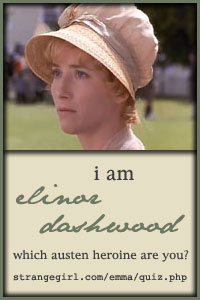The Calumny of Appelles by Botticelli
9:28 AM
The Calumny of Appelles by Botticelli
(click on the image to enlarge)
A little bit of history
Date: 1494
Located in the Uffizi Gallery, Florence, Italy
In Ancient Greece, there was a famous painter called Apelles. You might never heard of him because none of his paintings or even copies of his paintings survived. Apparently, before he died he was working on a painting called "Calumny" which is the first known exercise in allegory.
You see, Apelles had a rival, the artist Antiphilos, who was spreading rumours about Apelles being involved in an anti-Ptolemy plot. This episode, which almost cost Apelles his life, was the basis for his allegorical painting.
In Apelles' painting, we would see Calumny, Jealousy, Treachery, Deception, Ignorance and Suspicion personified - all of them convincing a fool who is more than ready to listen to their rumors. Behind them we'd see Repentance in tears appealing to Truth.
Sixteen centuries later, Renaissance painter Sandro Botticelli created his own version of this painting, following the accounts of Apelle's work.
In Ancient Greece, there was a famous painter called Apelles. You might never heard of him because none of his paintings or even copies of his paintings survived. Apparently, before he died he was working on a painting called "Calumny" which is the first known exercise in allegory.
You see, Apelles had a rival, the artist Antiphilos, who was spreading rumours about Apelles being involved in an anti-Ptolemy plot. This episode, which almost cost Apelles his life, was the basis for his allegorical painting.
In Apelles' painting, we would see Calumny, Jealousy, Treachery, Deception, Ignorance and Suspicion personified - all of them convincing a fool who is more than ready to listen to their rumors. Behind them we'd see Repentance in tears appealing to Truth.
Sixteen centuries later, Renaissance painter Sandro Botticelli created his own version of this painting, following the accounts of Apelle's work.
A little bit of technique
There's a great sense of drama in the painting. The characters are all portrayed in a very realistic manner and with subtle details which help identify their allegorical meaning.
The "bad judge", for example, has donkey ears. He believes whatever Suspicion and Ignorance are whispering to him.
The torch that Calumny is holding doesn't illuminate - a symbol of false knowledge.
Treachery and Deception are doing Calumny's hair. Why would anybody be fixing a person's hair in the middle of a trial? Because Treachery and Deception make Calumny's lies more attractive and seductive. That way the man will easily believe them.
A little bit of enthusiasm
There's a great sense of drama in the painting. The characters are all portrayed in a very realistic manner and with subtle details which help identify their allegorical meaning.
The "bad judge", for example, has donkey ears. He believes whatever Suspicion and Ignorance are whispering to him.
The torch that Calumny is holding doesn't illuminate - a symbol of false knowledge.
Treachery and Deception are doing Calumny's hair. Why would anybody be fixing a person's hair in the middle of a trial? Because Treachery and Deception make Calumny's lies more attractive and seductive. That way the man will easily believe them.
A little bit of enthusiasm
I got to say, I am a sucker for allegories. Unlike e. e. cummings, I love words in capital letters - Love! Truth! Calumny! Deception! you get the idea...
What makes Botticelli's work so unique is how he was able to unite Classical Antiquity with the Christian culture.
His source material is from Ancient Greece, but what about the man with his hands closed together in prayer? Not to mention the rags he wears and the way he positions his feet as if he were about to be crucified. I doubt a Greek would portray a man who's being dragged with feet like that!
So, there's the Classical, the Christian and... us. We boast about living in the so called "Information Age". Are we?
Sometimes I wonder how much of what we hear in the news is really true. That's why I can help but identifying with the man with the donkey ears.
The painting offers, then, two comforts. One, that we are not alone, the Greeks have been there, Calumny has always existed. We are all more or less subject to Hamlet's curse: "Be thou as chaste as ice, as pure as snow, thou shalt not escape calumny".
The other is that, despite what many people say, Truth does exist. Botticelli even gives us a clue of where to find it: his personified Truth is pointing at it.
What do you think about Botticelli's allegory?
Image via Wikipaintings (I suggest zooming to check out the details)
Source: Art by Paul Johnson pps. 70-71
pps. 70-71
Source: Art by Paul Johnson















0 comments
Thanks for commenting! Do come back because I usually reply to comments here.